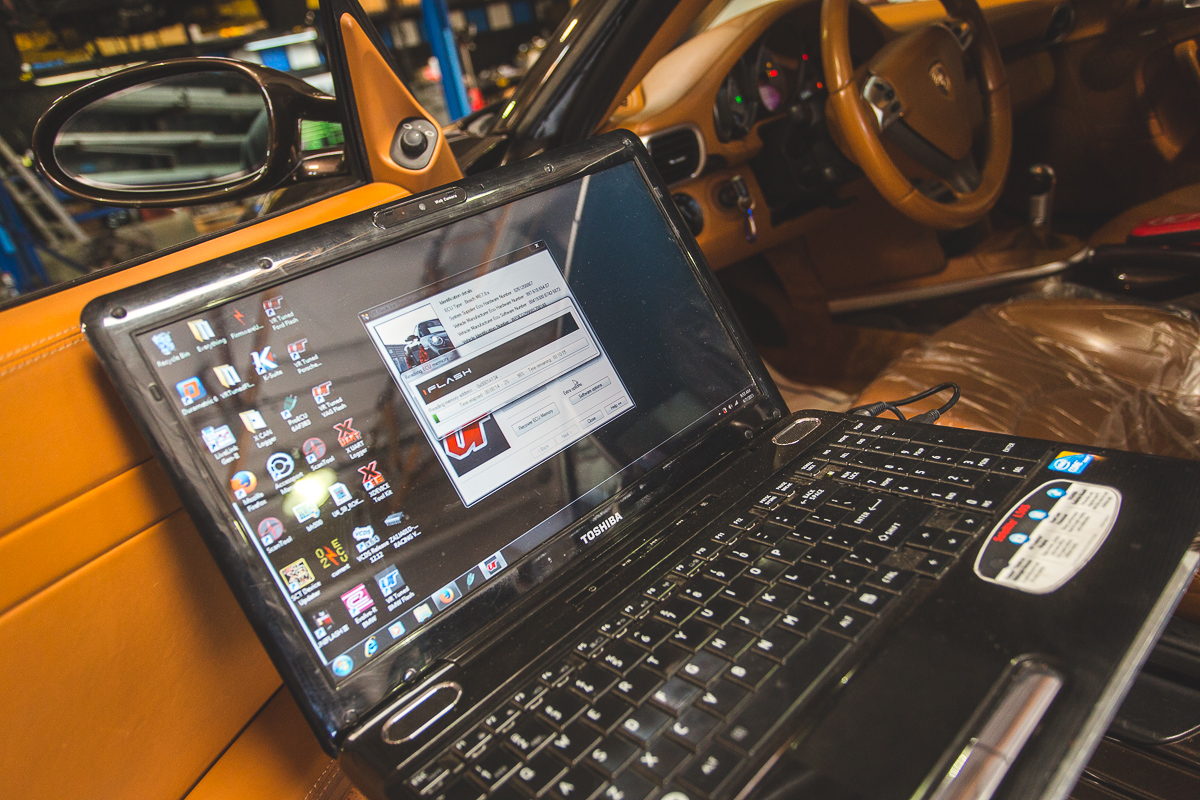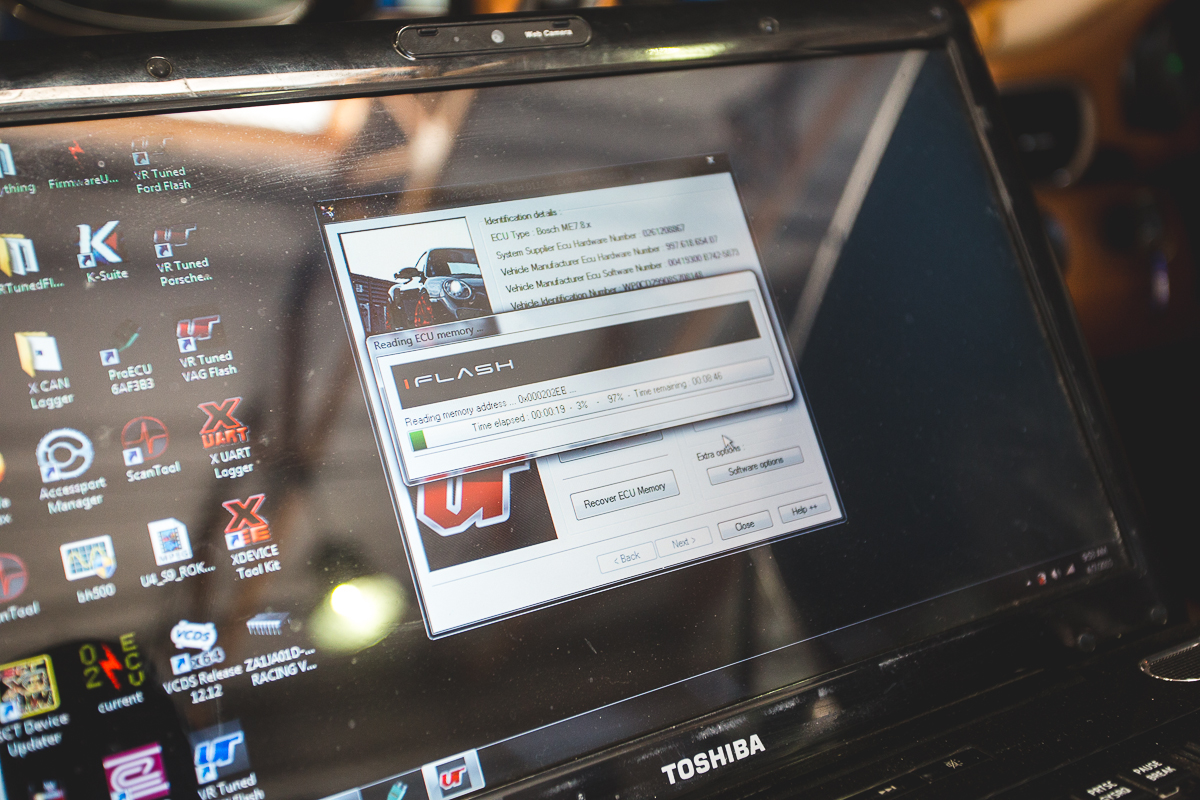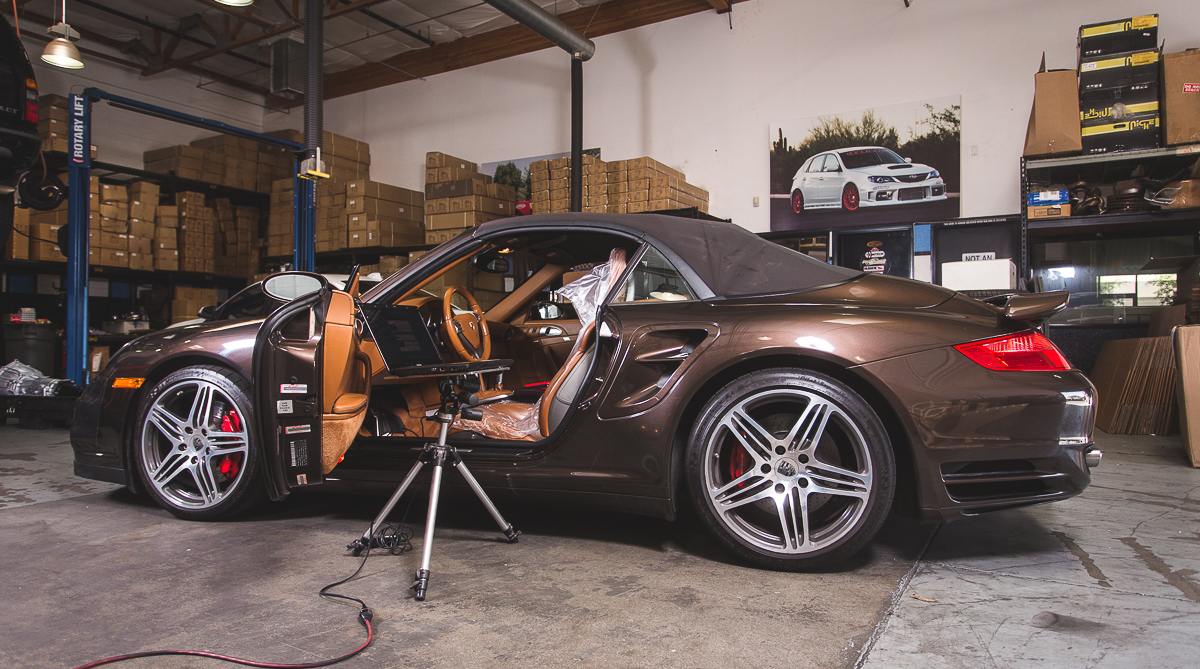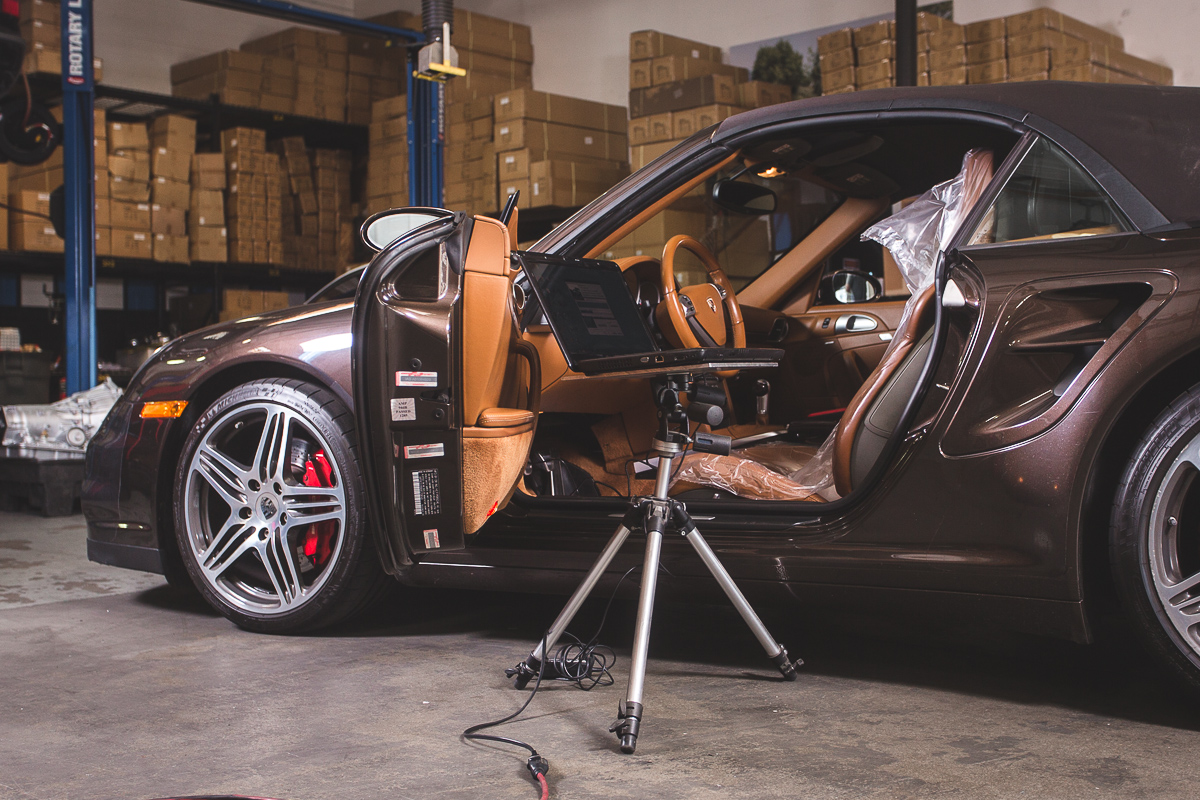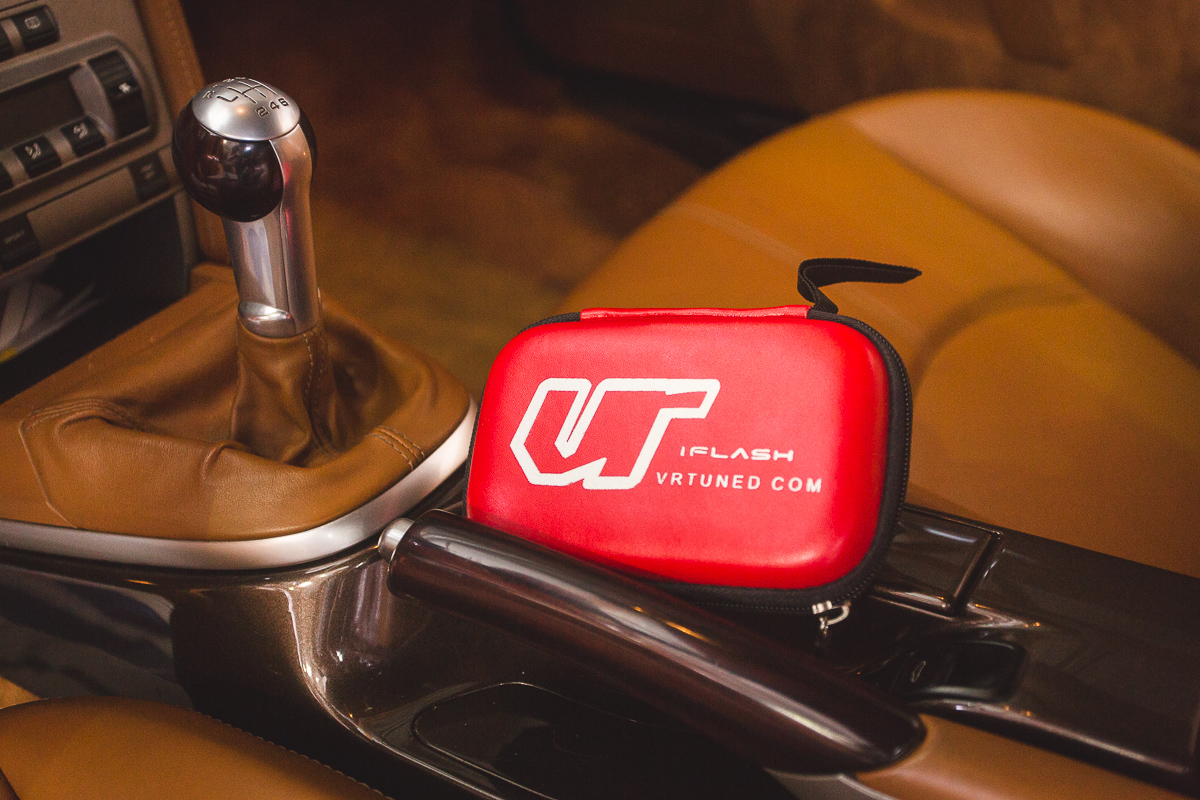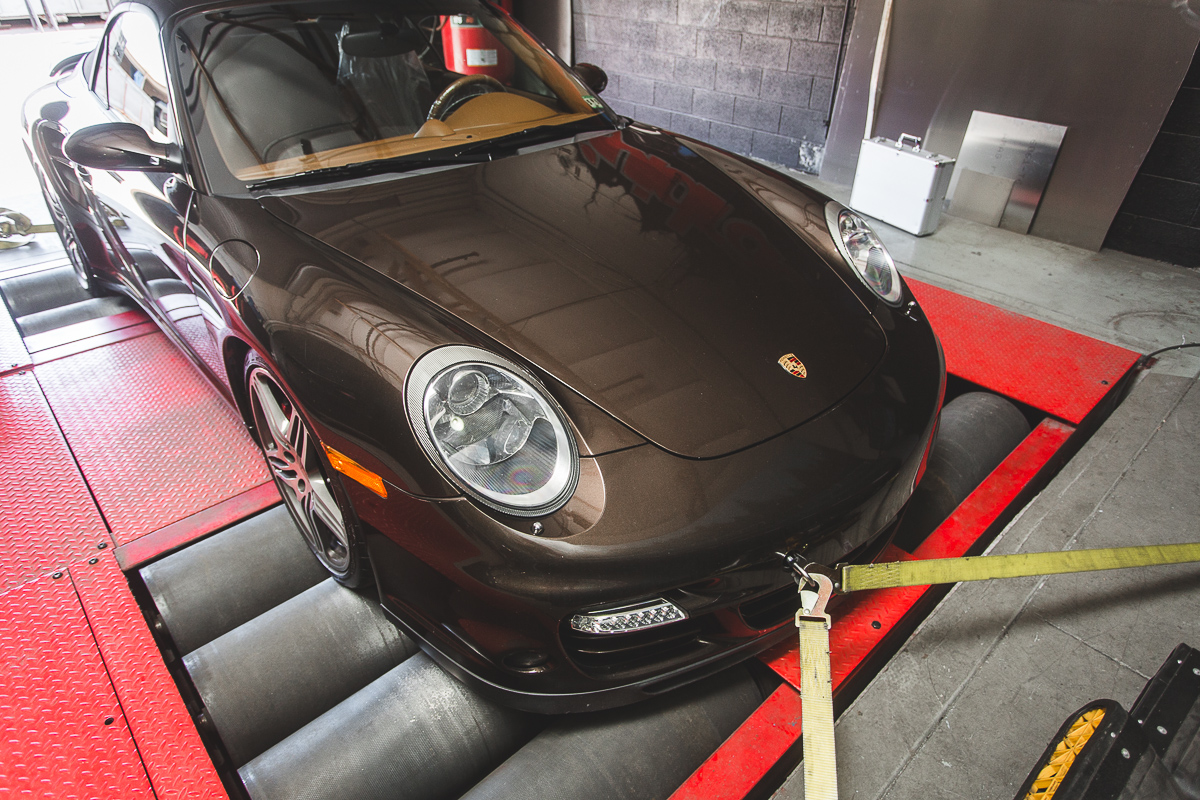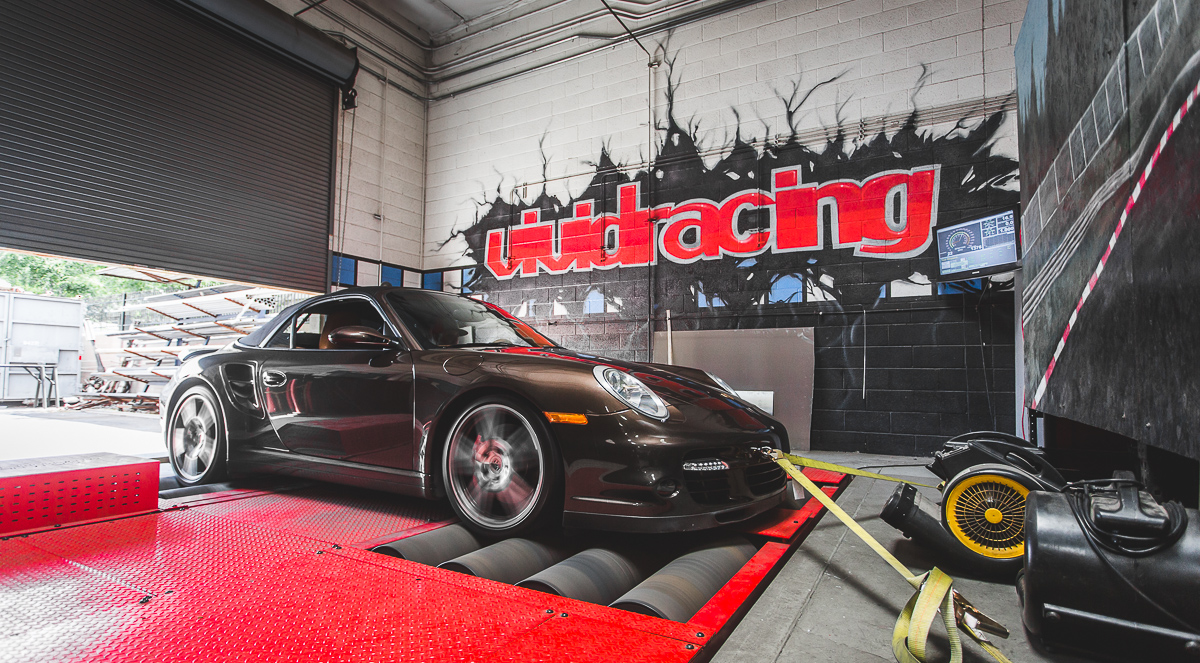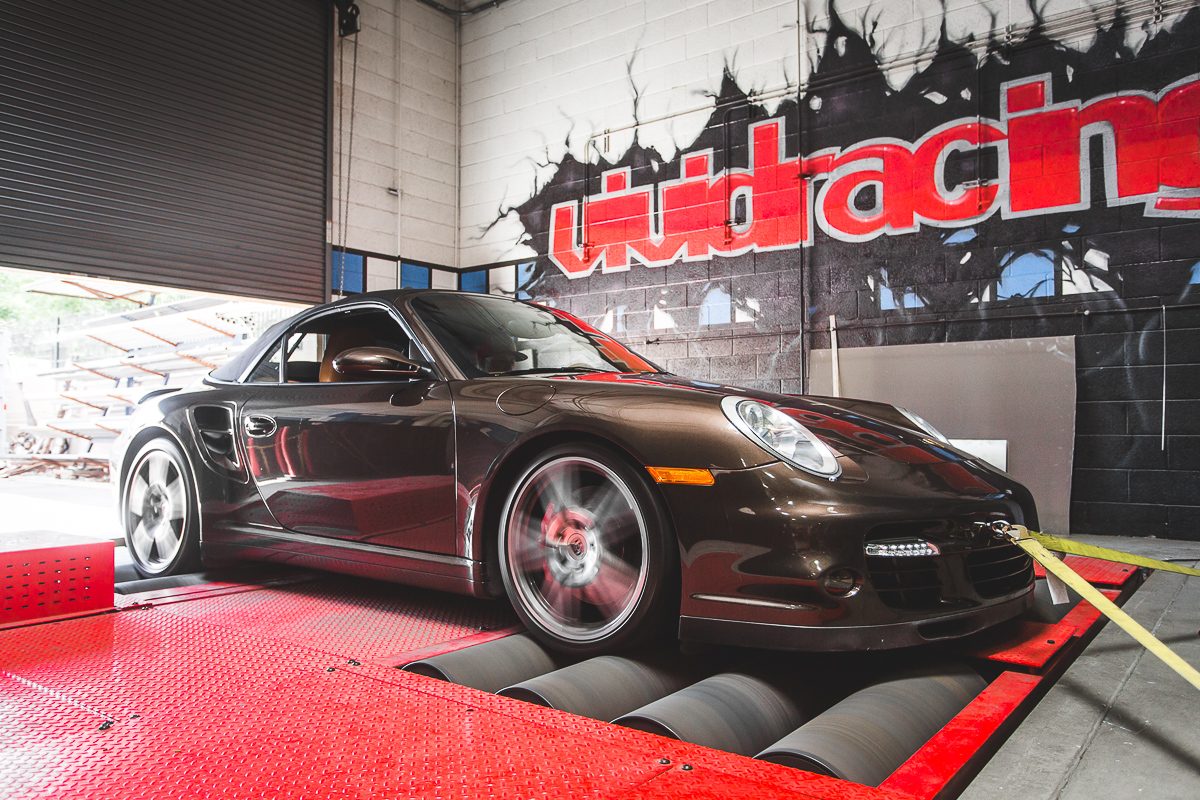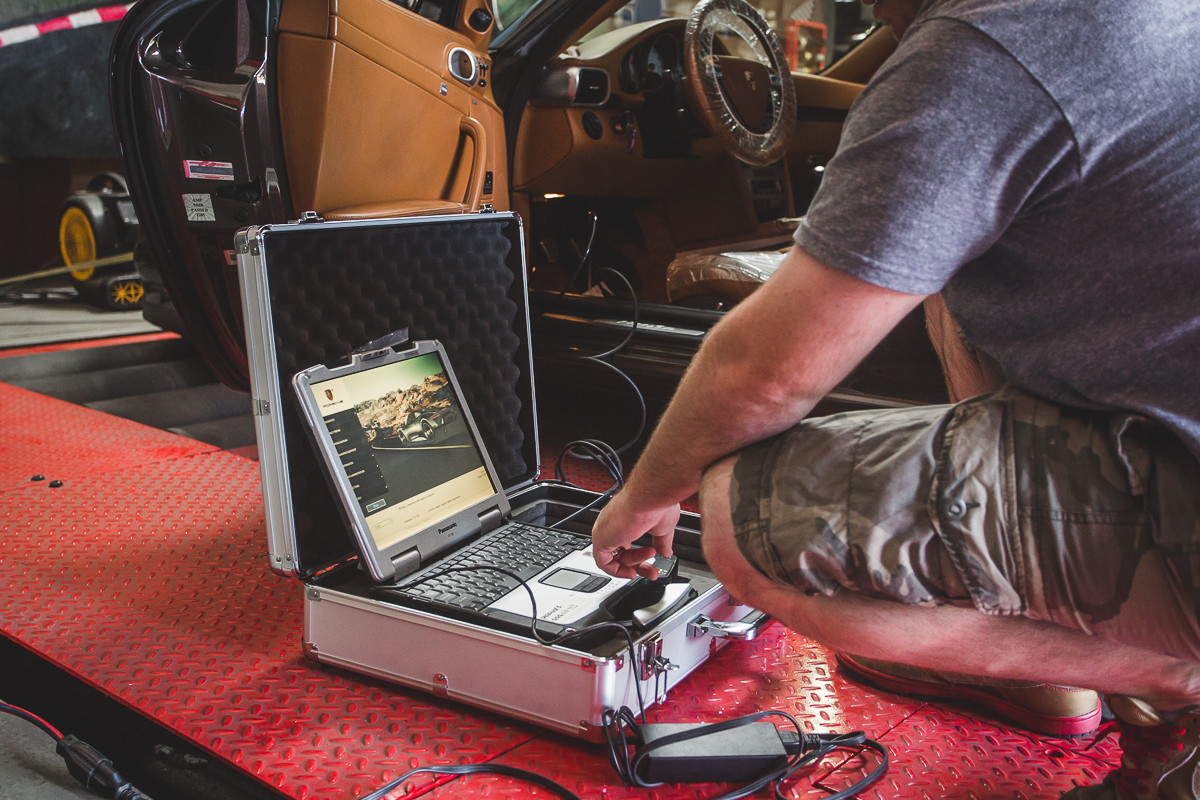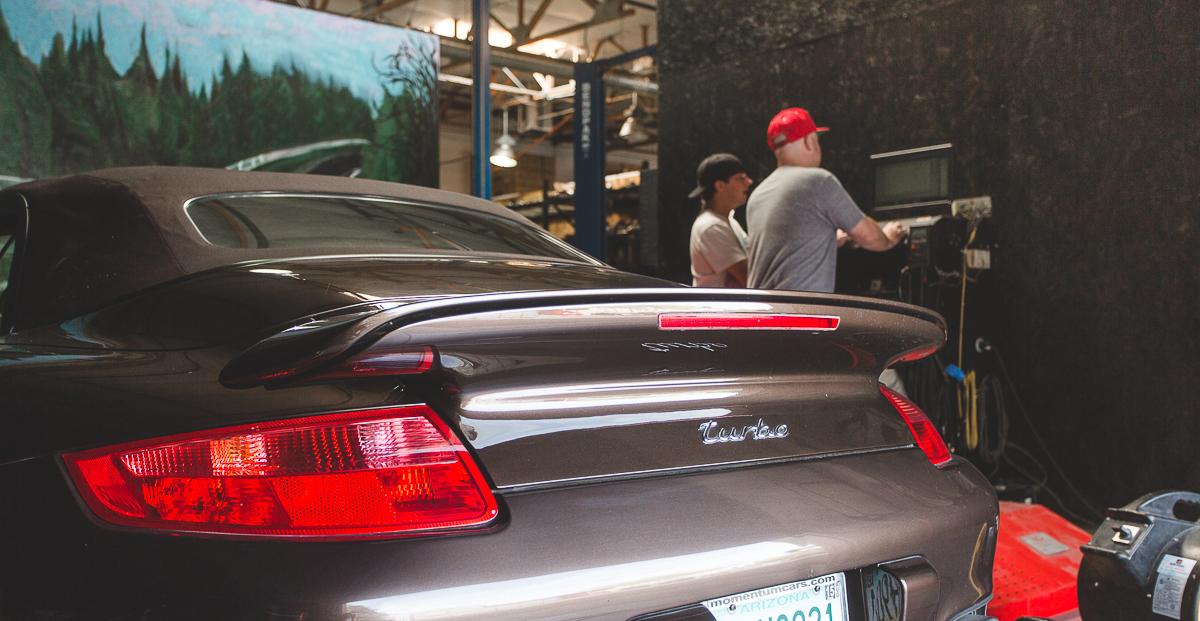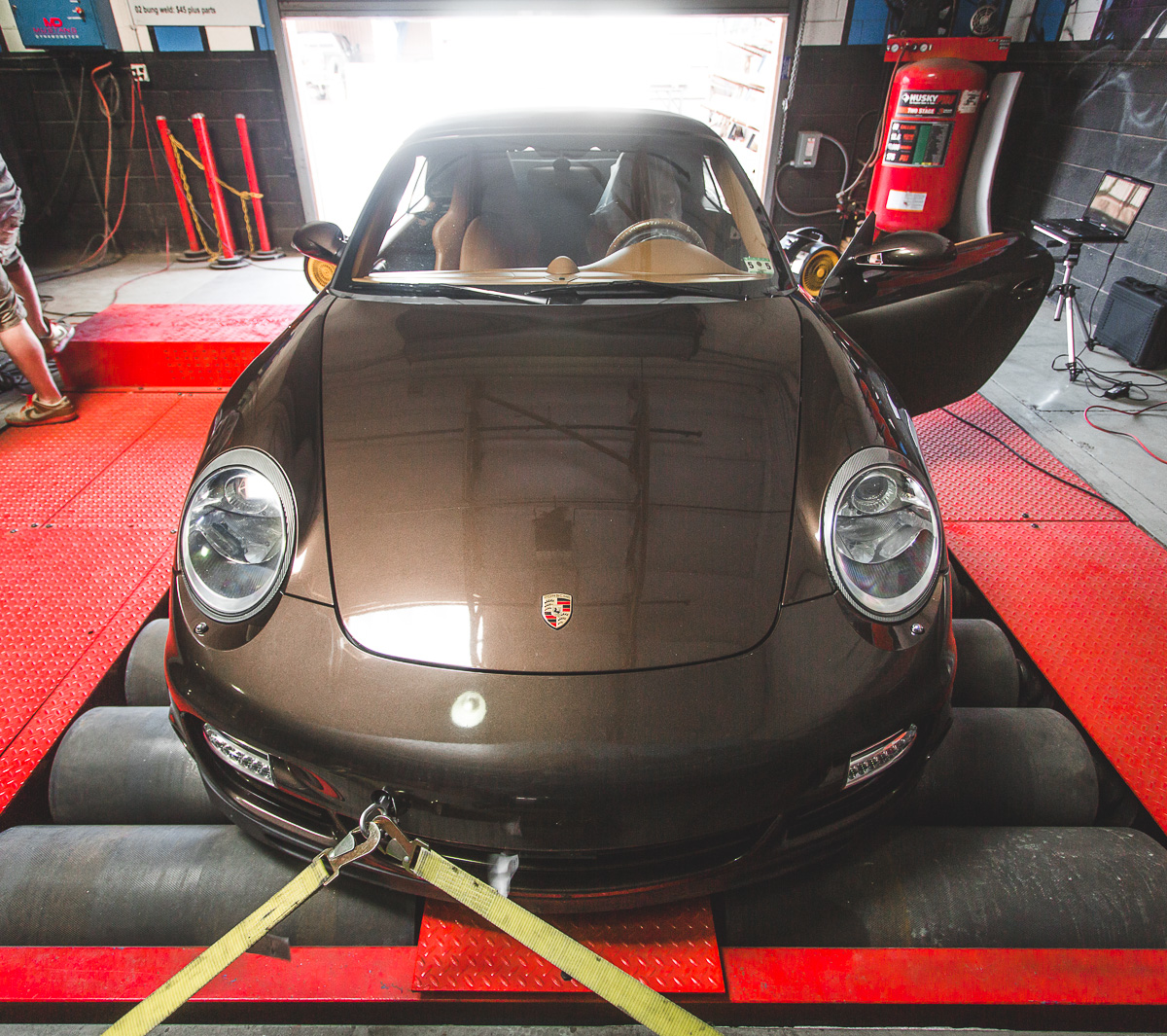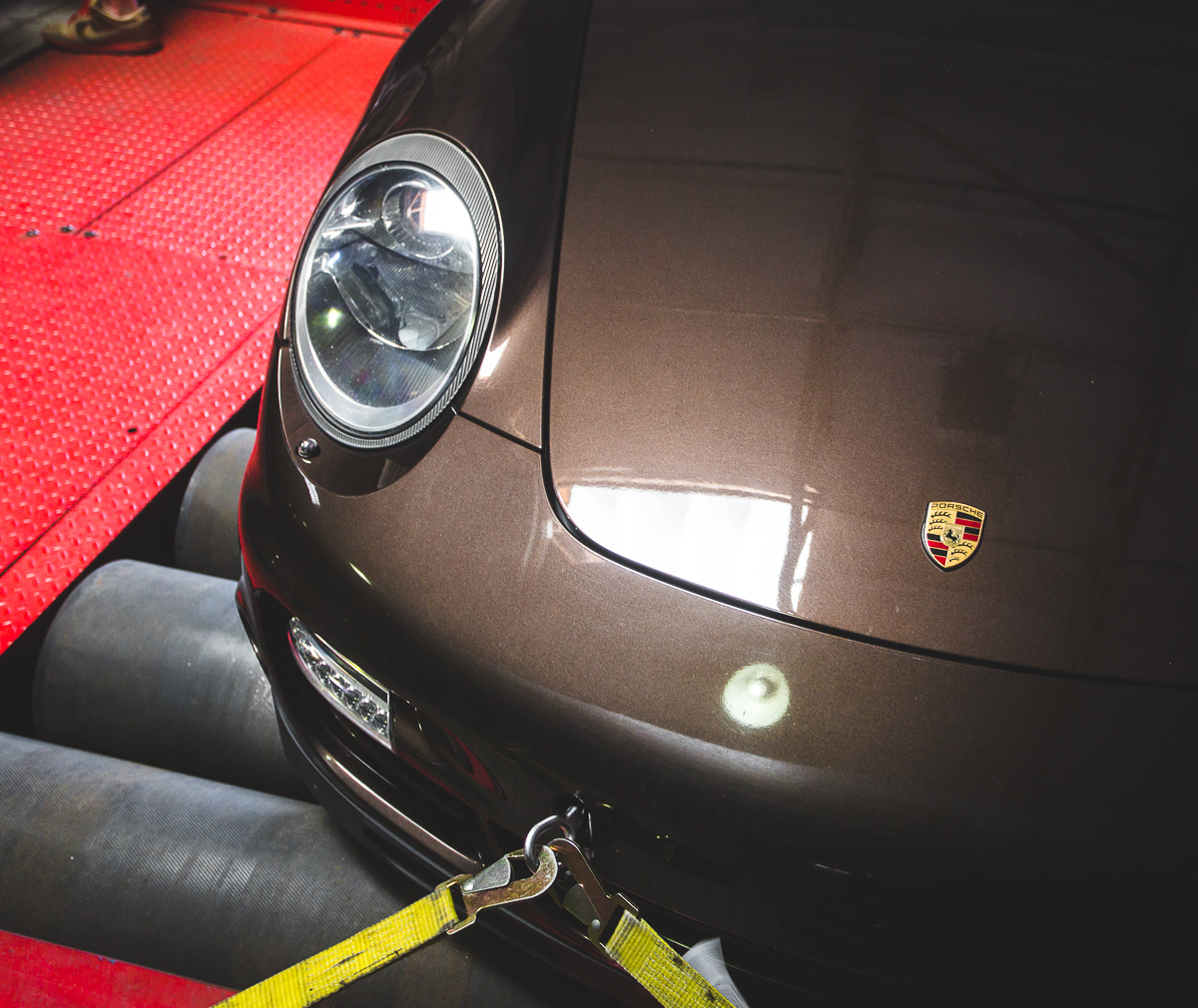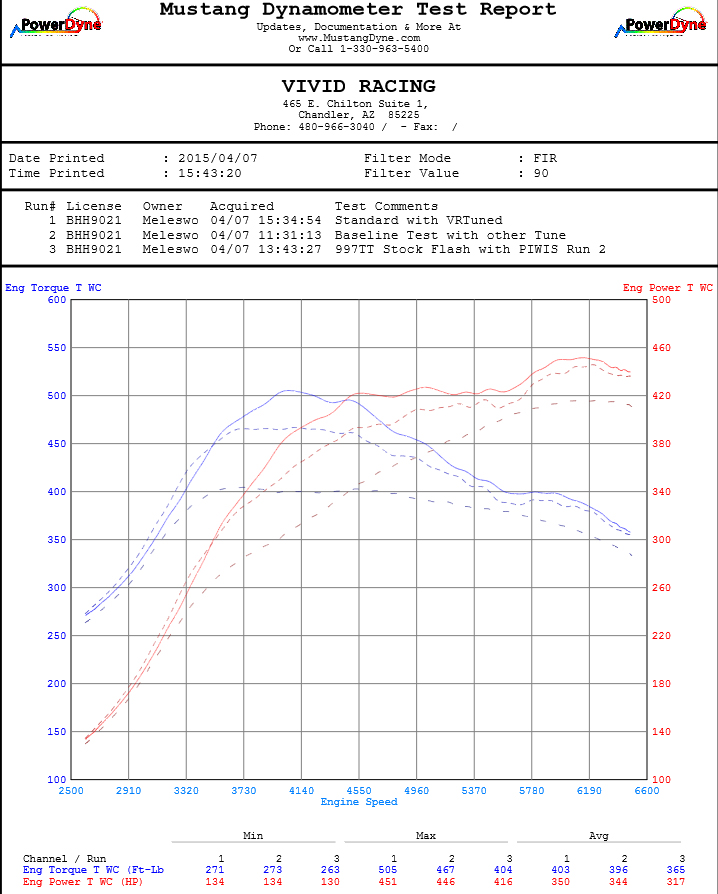Lets talk and compare Porsche 997 Turbo tunes! This was a pretty fun one and gives some good insight on why VR Tuned is a preferred brand as well as why it is important to upgrade your exhaust and spark plugs whenever you do a Porsche 997 Turbo ECU Tune. This car came to us here at our Gilbert, Arizona location. The 2008 997TT cab has 58000 miles on it and is a 6speed with no modifications. The customer uses the car for daily driving and does an occasionally PCA track event. Looking to get more power, the ECU flash is a great start without have to physically alter the car. With 480bhp from the factory, a well maintained 997TT on 93octane goes to about 615bhp. In this case, like all cars, we start by reading out the ECU with our VRTuned Instructions Here. Once the file is read out, we decrypt the file to be tuned. When we decrypt the file, it tells us if the file has good checksums and a no read tag. This means that the file has not been altered or previously tuned. With the 996TT and 997TT in a strong used market, there are a handful of cars that have tunes on them and the customers are unaware. So what happens then?
If a car is already tuned, we can alter the file to achieve better results. But its kinda like buying a car without a CarFax. You know it has 4 wheels and windows, but you dont know the history. So the best case scenario is to have a full stock file to tune from to make sure all the tables are available. Some tuners do different things which make doing a tune on top of a tune difficult and not the best. If your going to have your car flashed, its best to make sure it is a true stock file. Once we realized this car had some sort of tune on it, we confirmed with the customer if we could flash it back to the original using our Porsche PIWIS factory tool. Before we did that, we wanted to see where the car was on the dyno. So we ran the car as is. Our test yielded 446awhp and 467ft/lbs of torque. What we felt during the 3rd gear pull calibrated to 3000 rpm was the car jerking or struggling for fuel or spark on the way up to redline. Once we looked at the graph, this was apparent. After we reprogrammed the DME to stock, we ran the car again. In the past we have seen 997 Turbo’s baseline around 380 to 400 awhp on our Mustang Dyno. It typically has a 20-25% drivetrain loss. Our stock run gave us 416awhp and 404ft/lbs of torque. You can see how linear the power is and lack of torque the car has in its stock form. This dyno was a bit higher than other baseline tests, but not all 3.6L turbo engines are created equal. We always run our Mustang Dyno with a Parasitic Multiplier of 1.00 and do a 2500rpm to redline test. Now with a fresh stock file, we could get a good read out to tune with. Once the tune was completed and loaded, we ran the car again. This time we got 451awhp and 505ft/lbs of torque with all tests done in standard mode. We did 1 test in Sport Mode which gave us about 555ft/lbs of torque because the way the VTG turbos work.
Looking at the graph, one might go right for the peak numbers and say, this is only a gain of 35awhp and 101ft/lbs of torque over stock. At peak torque of about 4100rpm, we have a gain of 100awhp. At 4550rpm, we are at 80awhp. What happens here is the plugs not being able to deliver the spark efficiently causing the power to drop and flatten out. Along with stock cats, the car begins to fall flatter. 95% of the time, peak horsepower is equal to peak torque. But if the car cannot sustain it because of mechanial reasons, the power just wont be delivered. There are 2 main factors that help make a 997 and 996 Turbo ECU flash realize its full potential. The first is colder spark plugs. The stock heat range just cant handle the additional boost and power. Especially if they are not even close to being new. Porsche recommends the plugs be changed every 20,000 miles. If the stock plugs have anything more than 5000 miles on them, they will most likely give you trouble. We recommend going with the NGK BKR7EIX plugs. When the torque kicks in at 3400 rpm, you can see this waaviness until about 5500rpm where a flat spot is. The flat spot is because of the restrictiveness of the 400 cell cats and stock exhaust. The tune is designed to give you more boost in both sport and standard modes, but the turbo just can push that excess exhaust flow out. Its like drinking beer through a straw! When you add an aftermarket exhaust with high flow cats and muffler such as Fabspeed, Agency Power, Akrapovic, you allow those turbos to flow the necessary exhaust gas it needs to reach 615bhp.
Check out these awesome shots and dyno video of the chocolate 997TT Cab on the dyno and in process. Order Your VR Tuned ECU Flash Here.



